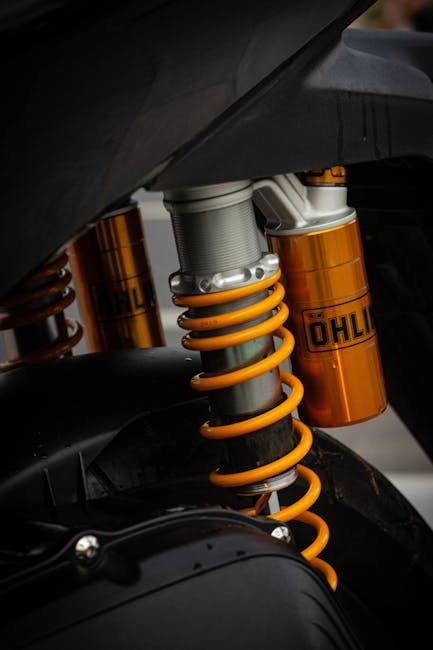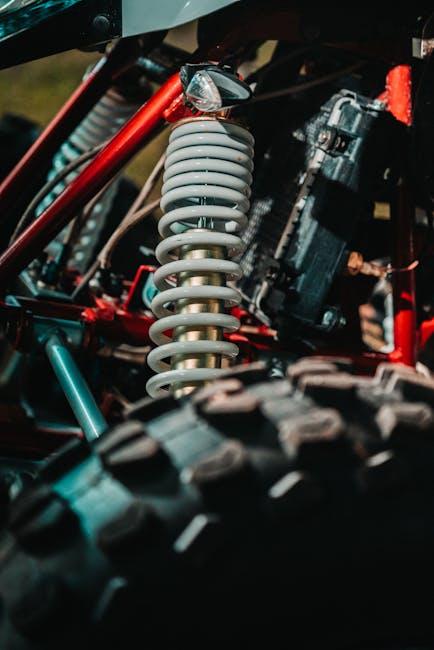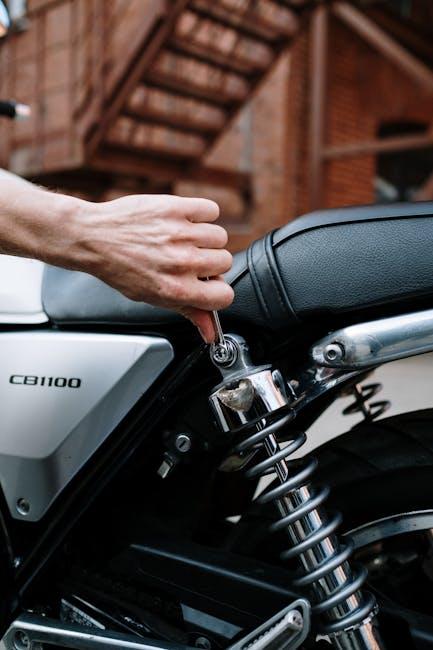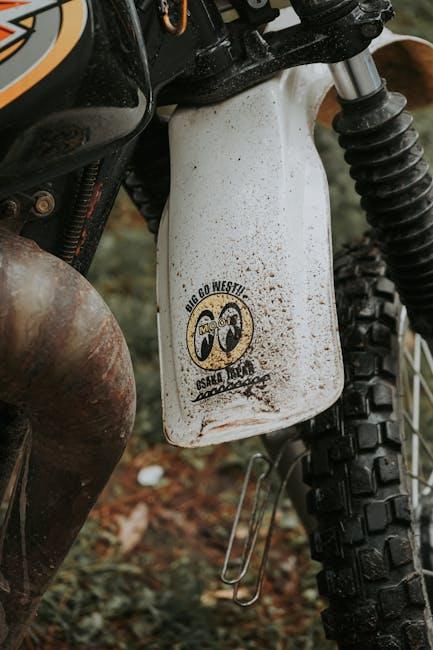Imagine cruising down a winding road, the world outside a blur as your vehicle glides smoothly over every bump and dip. The secret behind that seamless ride? Shock absorbers—unsung heroes tirelessly cushioning your journey from the chaos of uneven terrain. But like all hardworking parts, shock absorbers have their limits. Knowing when to replace them is crucial not just for comfort, but for your safety on the road. In this article, we’ll explore the signs that signal it’s time for new shock absorbers and why timely replacement can keep your drive smooth and secure.
Table of Contents
- Signs Your Ride Is Telling You It’s Time for New Shock Absorbers
- How Driving Conditions Accelerate Shock Absorber Wear
- The Impact of Worn Shock Absorbers on Vehicle Safety and Comfort
- Choosing the Right Replacement Shock Absorbers for Your Car Model
- Professional Inspection Tips for Accurate Shock Absorber Diagnosis
- Maintenance Practices to Extend the Life of Your Shock Absorbers
- Q&A
- The Conclusion

Signs Your Ride Is Telling You It’s Time for New Shock Absorbers
When your vehicle starts to exhibit unusual behaviors on the road, it’s often whispering a mechanical secret. Bouncy rides or an uncomfortable, jarring sensation over small bumps are classic clues. If your car feels like it’s dancing on the pavement, struggling to keep composure, it’s a glaring sign your shock absorbers are begging for attention. Another telltale symptom is excessive body roll during turns — when your ride leans more than usual, those shocks aren’t doing their job effectively.
Pay close attention to visual indicators as well. Look out for oil leaks around the suspension area, which often signal damaged shock absorbers. In addition to that, notice if your tires show uneven wear patterns, especially cupping or scalloping — this happens when shocks fail to keep the tires firmly planted. Below is a quick glance at common symptoms and their meanings:
| Symptom | What It Means |
|---|---|
| Excessive bouncing | Worn shock absorbers |
| Leaning in turns | Reduced suspension control |
| Oil leaks near shocks | Damaged seals, loss of fluid |
| Uneven tire wear | Poor shock absorption |

How Driving Conditions Accelerate Shock Absorber Wear
Shock absorbers regularly face challenges from various driving environments, which can dramatically shorten their lifespan. Rough terrains, such as gravel roads or unpaved trails, 🛤️ exert constant pressure on these components, causing quicker degradation. Likewise, frequent stop-and-go traffic and pothole-ridden urban streets force the shock absorbers to work overtime, succumbing to wear and tear faster than in smooth highway driving.
Factors contributing to accelerated shock absorber wear include:
- Consistent exposure to uneven or rocky roads
- Carrying heavy loads or towing frequently
- Driving at high speeds over bumps or speed breakers
- Extreme weather conditions, such as excessive heat or cold
| Driving Condition | Impact on Shock Absorbers | Replacement Timeframe |
|---|---|---|
| Rough terrain | Increased piston wear and oil leakage | Every 30,000 miles |
| City stop-and-go | Heat buildup, quicker seal damage | Every 40,000 miles |
| High-speed highway | Minimal wear under steady conditions | Every 50,000 miles |

The Impact of Worn Shock Absorbers on Vehicle Safety and Comfort
When shock absorbers begin to wear out, the consequences extend far beyond just a bumpy ride. These critical components act as the vehicle’s primary cushion against road imperfections, ensuring that tires maintain constant contact with the surface. As they degrade, your car’s ability to absorb and dissipate energy from potholes, bumps, and uneven terrain diminishes significantly. This can lead to increased stopping distances, reduced steering precision, and compromised traction—all of which elevate the risk of accidents, especially in emergency maneuvers or adverse weather conditions.
Beyond safety, comfort suffers dramatically with worn shock absorbers. Passengers might notice excessive vibrations, uneven tire wear, and that unsettling “floaty” sensation during turns or sudden braking. Addressing this issue promptly not only restores smooth handling but also protects other suspension components from premature damage. Consider the table below to understand the warning signs and their effects on your drive:
| Warning Signs | Impact on Vehicle | Driver Experience |
|---|---|---|
| Uneven Tire Wear | Reduced traction and stability | Frequent steering adjustments needed |
| Increased Braking Distance | Higher accident risk | Delayed vehicle response |
| Excessive Vibrations | Damage to suspension parts | Uncomfortable, jolting ride |

Choosing the Right Replacement Shock Absorbers for Your Car Model
Selecting the perfect replacement shock absorbers requires a blend of understanding your vehicle’s unique characteristics and recognizing your driving habits. It’s essential to match the shock absorbers not just by the make and model, but also consider the road conditions you frequent and the level of comfort you desire. For instance, if you often navigate rough terrains, prioritizing heavy-duty or gas-charged shocks can provide enhanced stability and durability, whereas standard hydraulic shocks might suffice for city driving.
Below is a quick reference guide to help you decide which type of shock absorber suits your car:
| Shock Type | Best For | Advantages |
|---|---|---|
| Hydraulic (Twin-tube) | Everyday city driving | Cost-effective, smooth ride on paved roads |
| Gas-charged | High-performance & rough terrain | Improved handling, reduces foaming |
| Adjustable | Customized driving preferences | Allows tuning ride stiffness |
- Check compatibility: Ensure the shock matches your car’s suspension type.
- Quality matters: Opt for reliable brands to guarantee performance and longevity.
- Installation: Professional fitment is recommended to avoid safety risks.

Professional Inspection Tips for Accurate Shock Absorber Diagnosis
Begin your diagnostic journey by focusing on visual and tactile cues to assess the physical condition of the shock absorbers. Look for oil leaks around the shock body, as these are clear indicators of seal damage and diminished damping efficiency. Additionally, perform a hands-on check by pushing down on each corner of the vehicle; an excessive bounce often suggests the absorber is no longer functioning properly. Keep an eye out for uneven tire wear or sagging suspension, as these subtle signs can hint at suspension components working overtime to compensate for failing shocks.
Professional technicians employ a combination of dynamic and static tests that elevate the accuracy of the diagnosis:
- Bounce Test: Measure rebound responsiveness to pinpoint how well the shock absorbs energy.
- Noise Inspection: Listen closely for knocking or rattling sounds when driving over bumps, which can indicate internal wear.
- Visual Assessment: Use a grease pencil or chalk to mark shock position and detect excessive travel or leaks after a test drive.
| Inspection Method | What to Observe | Significance |
|---|---|---|
| Bounce Test | Vehicle rebounds excessively | Indicates worn damping ability |
| Visual Check | Oil leaks or dents on shock | Points to seal failure or damage |
| Noise Inspection | Unusual knocking sound | Shows internal shock component wear |

Maintenance Practices to Extend the Life of Your Shock Absorbers
Implementing regular maintenance routines can dramatically prolong the effectiveness of your shock absorbers. Start by inspecting them every 12,000 miles or as part of your scheduled vehicle service. Keep an eye out for signs of oil leakage, which can indicate worn seals, and pay attention to any unusual noises or vibrations while driving. Simple habits such as regularly cleaning the suspension components and ensuring wheel alignment can prevent premature wear caused by dirt accumulation and improper load distribution.
Moreover, adopting preventive care strategies helps preserve your shock absorbers’ responsiveness. Consider these best practices:
- Avoid harsh driving conditions: Minimize off-road driving or aggressive handling when possible.
- Replace worn bushings and mounts: These components support shock absorbers and their failure can transmit extra stress.
- Monitor tire condition and pressure: Balanced tires reduce uneven strain on shocks.
- Check suspension components: Springs and control arms should be in good shape to maintain overall system integrity.
| Maintenance Task | Recommended Frequency | Key Benefit |
|---|---|---|
| Visual Inspection | Every 12,000 miles | Early detection of leaks and damage |
| Wheel Alignment | Every 15,000 miles or post-impact | Improved tire wear and shock function |
| Shock Mount Check | During oil changes | Prevents excess vibration |
| Suspension Cleaning | Monthly or post-off-road | Prevents dirt buildup and corrosion |
Q&A
Q&A: When to Replace Shock Absorbers
Q1: What exactly do shock absorbers do, and why are they important?
A1: Shock absorbers are the unsung heroes of your vehicle’s suspension system. They control the impact and rebound movement of your car’s springs and suspension, ensuring a smooth ride by damping the bumps and vibrations from the road. Without functioning shock absorbers, your ride becomes unstable, less safe, and uncomfortable.
Q2: How can I tell if my shock absorbers need replacing?
A2: Several signs signal that your shock absorbers may be worn out. Common indicators include excessive bouncing after hitting a bump, a nose-dive feeling when braking, uneven tire wear, fluid leaks on or near the shocks, and a noticeable decrease in handling or stability. If your car feels like a trampoline or sways too much around corners, it’s time for a closer look.
Q3: Is there a recommended mileage or time frame for replacing shock absorbers?
A3: Typically, shock absorbers last between 50,000 and 100,000 miles, but this depends heavily on driving conditions and habits. Frequent rough-road travel or heavy loads can shorten their lifespan. It’s wise to inspect them periodically—especially after 50,000 miles—and replace them proactively to avoid bigger suspension issues.
Q4: Can I just replace one shock absorber, or should they be replaced in pairs?
A4: For balanced handling and safety, shock absorbers are best replaced in pairs—either both front or both rear shocks. Replacing just one shock can create uneven handling, which might compromise your driving experience.
Q5: What happens if I delay replacing worn shock absorbers?
A5: Ignoring worn shocks can lead to several problems. Your tires can wear unevenly and prematurely, your brakes might work less effectively, and the overall stability of the vehicle is compromised, increasing the risk of accidents. Plus, the ride quality deteriorates, making every journey less comfortable.
Q6: Can I replace shock absorbers myself, or should I see a professional?
A6: Replacing shock absorbers can be straightforward for experienced DIYers with the right tools. However, it involves lifting the vehicle safely and handling suspension components, so many prefer to entrust the job to professionals. Mechanics can also spot related issues and ensure the new shocks are installed correctly for optimal performance.
Q7: Are there different types of shock absorbers, and do they influence replacement timing?
A7: Yes, there are various types—such as hydraulic, gas-charged, and adjustable shocks. Their durability and performance can differ, influencing when they need replacement. Knowing your vehicle’s specific shock absorber type can help set realistic expectations for lifespan and maintenance.
Understanding when to replace your shock absorbers isn’t just about maintaining a smooth ride—it’s about safety and preserving your vehicle’s longevity. Keep an eye, or better yet, a professional eye, on those shocks to keep rolling safely and comfortably.
The Conclusion
Knowing when to replace your shock absorbers is more than a maintenance task—it’s a commitment to safety, comfort, and control on every journey. By staying attuned to the subtle signs and timing your replacements wisely, you ensure your vehicle continues to perform at its best, cushioning you from life’s bumps and keeping the road steady beneath your wheels. After all, sometimes the smoothest ride is the one you prepare for ahead of time.

